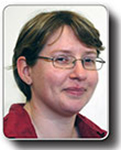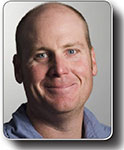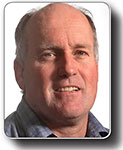The Reinga Basin, North Island, New Zealand
Chris Uruski A , Eva Reid A , Vaughan Stagpoole A , Rick Herzer A , Angela Griffin A , Kyle Bland A , Brad Ilg A and Greg Browne AGNS Science
The APPEA Journal 50(1) 287-308 https://doi.org/10.1071/AJ09017
Published: 2010
Abstract
In early 2009, CGGVeritas, supported by the Crown Minerals Group of New Zealand’s Ministry of Economic Development, undertook a 5,900 km reconnaissance 2D seismic survey of the Reinga Basin, which is located to the northwest of the Northland Peninsula and Basin, New Zealand. Although very little data previously existed across this basin apart from low-fold reconnaissance seismic data, it was suspected of being an extension of the Northland Basin and to contain a thick sedimentary succession. It was thought to have formed as a rift basin near the Gondwana margin and to have been inverted during Neogene evolution of the present plate boundary.
This paper is the result of the first interpretation of this new, high-quality data set. It confirms the presence of the basin and its sedimentary succession. Up to 9,000 m of sedimentary fill is imaged. The presence of coaly early rift packages and extensions of the Waipawa Formation black marine shale suggest that the basin contains voluminous source rocks. The basin appears to be more deformed in the northwest where large inversion structures are imaged. The northeastern margin is underlain by an extension of the Northland Allochthon which was obducted onto the New Zealand margin during initiation of the present plate boundary around 25 million years ago (Ma). The basin may also have been affected by strike-slip faulting associated with the Vening-Meinesz fracture zone, which developed during the Miocene. Several volcanic bodies are recognised, but in contrast to the adjacent Northland Basin where many large Miocene shield volcanos erupted, volcanic extrusions are rare in the Reinga region.
Thermal modelling suggests that the basal source rocks are mature and expelling hydrocarbons and many direct hydrocarbon anomalies are present. Large trapping structures are apparent throughout the basin and even at this early stage of knowledge it appears that the region may have significant hydrocarbon potential. This paper will discuss the evolution of the basin in the regional tectonic context and summarise its petroleum prospectivity.

Chris Uruski manages the GNS Science Frontier Basins Project in New Zealand where he has worked since 1987. His main area of expertise is seismic interpretation and he is a co-author of two major GNS regional basin studies publications: the Western Southland and the East Coast monographs. He holds a BSc in geology from the University College of Wales, Aberystwyth. Chris has worked at Aberystwyth and Durham Universities, as well as for ECL in various parts of the world before arriving in New Zealand. He was the lead author of major reports on the Deepwater Taranaki, Northland, East Coast and Great South basins. Chris has worked on contract for many of the exploration companies in New Zealand and he believes that our deepwater sedimentary basins contain large volumes of oil and gas. c.uruski@gns.cri.nz |

Eva Reid is a seismic interpreter at GNS Science. Eva has a BSc in geology and a MSc in petroleum geology from Imperial College, London. She worked for Burlington Resources from 1999 and for Conoco (UK) Ltd in London, on data from Algeria and the offshore East Irish Basin as well as the North Sea. For the last year, Eva has worked at the hydrocarbon section of GNS Science in Lower Hutt on a variety of basins around the country. e.reid@gns.cri.nz |

Vaughan Stagpoole presently manages the ocean exploration section at GNS Science. Dr Stagpoole received his PhD in geology from Victoria University of Wellington in 1997. He specialises in petroleum basin stratigraphy and has published extensively on basin modelling. Vaughan has been the research program leader for regional offshore basins and the GNS Science project manager for the NZ Continental Shelf submission to the UN. v.stagpoole@gns.cri.nz |

Rick Herzer is a research geologist in the ocean exploration group at GNS Science. He has a BSc in geology from Queen’s University, Kingston, a MSc in marine geology from the University of British Columbia and a PhD in marine geology from Victoria University of Wellington. Rick has worked in Australia, Brazil, Canada, Fiji, France, New Caledonia, Tonga and the United States for Gulf Canada, the Geological Survey of Canada and the New Zealand Oceanographic Institute. He joined the New Zealand Geological Survey in 1979 and has worked in several roles, including chief petroleum geologist. His interests include New Zealand’s marginal plateaux and troughs and he has contributed much to the New Zealand UNCLOS Law of the Sea program. r.herzer@gns.cri.nz |

Angela Griffin is a geologist in the hydrocarbons section at GNS Science. She holds a BSc and an MSc in earth sciences and geography from Waikato University. Angela’s professional interests range from CO2 sequestration to reservoir geology, shale gas, and the use of GIS systems. She is an author of a number of papers and client reports including a field trip guide for onshore Northland. a.griffin@gns.cri.nz |

Kyle Bland is a basin modeller at GNS Science. He holds a BSc and an MSc in earth sciences and a PhD in earth and ocean science from Waikato University. Kyle’s experience has been in New Zealand geology, stratigraphy and sedimentology and he has a good publications record. He has worked in his present role at GNS Science for three productive years, working on Taranaki Neogene reservoir potential, Carbon capture and storage and petroleum prospectivity of Taranaki and Northland basins. k.bland@gns.cri.nz |

Brad Ilg is a structural geologist at GNS Science, where he has been employed for the last four years. He has had wide experience as: a project manager building logging roads in the USA, an environmental geologist, a university professor, and a field geologist for the New Mexico Bureau of Mines. He has managed the New Zealand Field Institute and ran the science teaching program at a Wellington high school. He holds a BSc and a BA in geography from the University of California, a MSc in geology from Northern Arizona University, and a PhD in earth and planetary sciences from the University of New Mexico. At GNS Brad has been working on applications of structural geology to petroleum exploration and has completed projects for a number of exploration companies in New Zealand. b.ilg@gns.cri.nz |

Greg Browne is the manager of the GNS Science Hydrocarbons section. He has a BA in geomorphology, a BSc and an MSc in geology from Auckland University and a PhD in geology from the University of Western Ontario. Greg has been employed at GNS since 1981 and has published widely on sedimentology and petroleum potential of the Canterbury, Taranaki and other basins around New Zealand. Recently Greg published on the discovery of dinosaur footprints from the northwest Nelson region of the South Island, New Zealand. g.browne@gns.cri.nz |


